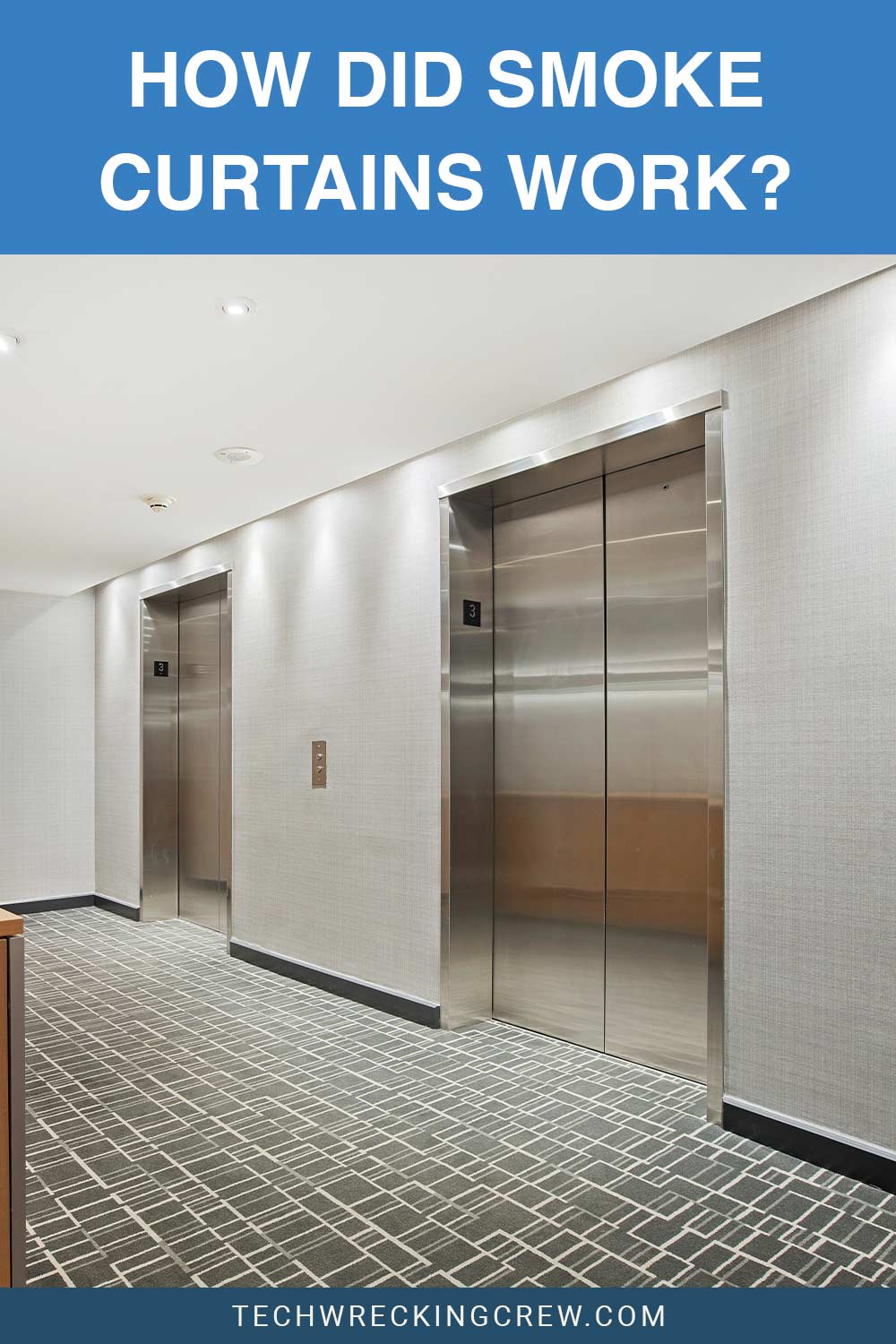Smoke curtains are designed to help provide essential compartmentation, containment, and channeling of material to dampen the effects of a fire and the smoke it produces.
Primarily when a fire is detected, a set of vertical and horizontal blinds were utilized to help guide the smoke away from certain parts of the building.
This would help those escaping, along with the first responders that arrive on the scene, giving the firefighting units a clear sight of where the fire is located. This funneling of the smoke can also help prevent heavy damage to the walls and other building features.
Are Smoke Curtains the Same as Fire Curtains?
You say Tom-a-to, I say tomato; these two curtains are made from the same material and perform the same tasks. The difference is that fire curtains have a higher temperature rating to deal with the actual heat of the flame.
In contrast, the smoke curtain is designed to keep the smoke away from valuables and elevator shafts.
One could use a fire curtain instead of a smoke curtain, but the smoke curtains would need more suitable material to stand up to the fire itself. In effect, the two are the same but made of different materials.
What are the Two Types of Smoke Curtains?
The two main types of smoke curtains are vertical and horizontal, AKA the elevator curtain. The elevator curtain is designed to block smoke and prevent the spread of flame through the elevator shafts.
The vertical curtain can be utilized to spare walls, funnel smoke, and prevent damage to valuables.
There are other creative applications for a curtain’s smoke and fire shield. However, of these two types, in today’s new construction, only the elevator curtains are utilized as preventative means for flames spreading via the elevator shafts because of the upward cycling airflow.
What are Smoke Curtains Made of?
There are different ways to create smoke curtains, the most popular is to buy the high-temperature rated film or smoke-rated fabric composed of a fiberglass base that meets the UL 1784 standards for withstanding but directly dealing with open flame.
The elevator curtains are produced with a high-performance film, magnets, and an adhesive to bond the two of them. They come primarily in three different types.
The standard containment curtains for doors, the side guides designed as a smoke guard, and the draft control. Finally, you have custom designs that will cover almost everything else.
How are Smoke Curtains Activated?
Most designs of smoke curtains have a retractable fabric that remains hidden until needed; usually, the apparatus is activated by an alarm, detector signal, or even a manual switch.
Once the action is triggered, the curtains will descend, fulfilling their screening purpose, funneling the smoke away from valuables and preventing damage.
Elevator smoke curtains are similar but unique technological equipment used to stem the movement of flames from floor to floor. Most elevator shafts pull air up into the building, which is a perfect place for a fire to find a place to breathe and spread quickly.
Where are Smoke Curtains Installed?
A building, factory, or similar construction will want to contain any fires that may break out within the confines of the said building.
The placement of the smoke curtains is primarily based on Fire Marshall guidance and fire ordinances found in the municipality, county, state, and federal governments– the doors and the sides of the elevator.
The most important locations to have a smoke curtain would be in the elevator shafts and stairwells, potentially providing an oxygen-rich environment for the fire to grow and spread.
However, as mentioned, there are also smoke curtains placed strategically to help prevent damage to valuables and other expensive equipment.
Final Thoughts on How did Smoke Curtains Work
One of the most overlooked elements of a building is the preventative fire element to help prevent damage and collapse in case of a severe fire.
Speaking to that note, the fire and smoke curtain technology has come a long way in becoming essential in the defense and prevention of fire.
The materials are made to withstand a minimum of four hundred degrees Fahrenheit.
They can be applied to more than just elevators or offices even. Thinking about how to use this material in the home leads to the water heater, gas lines, and other hot places within.

